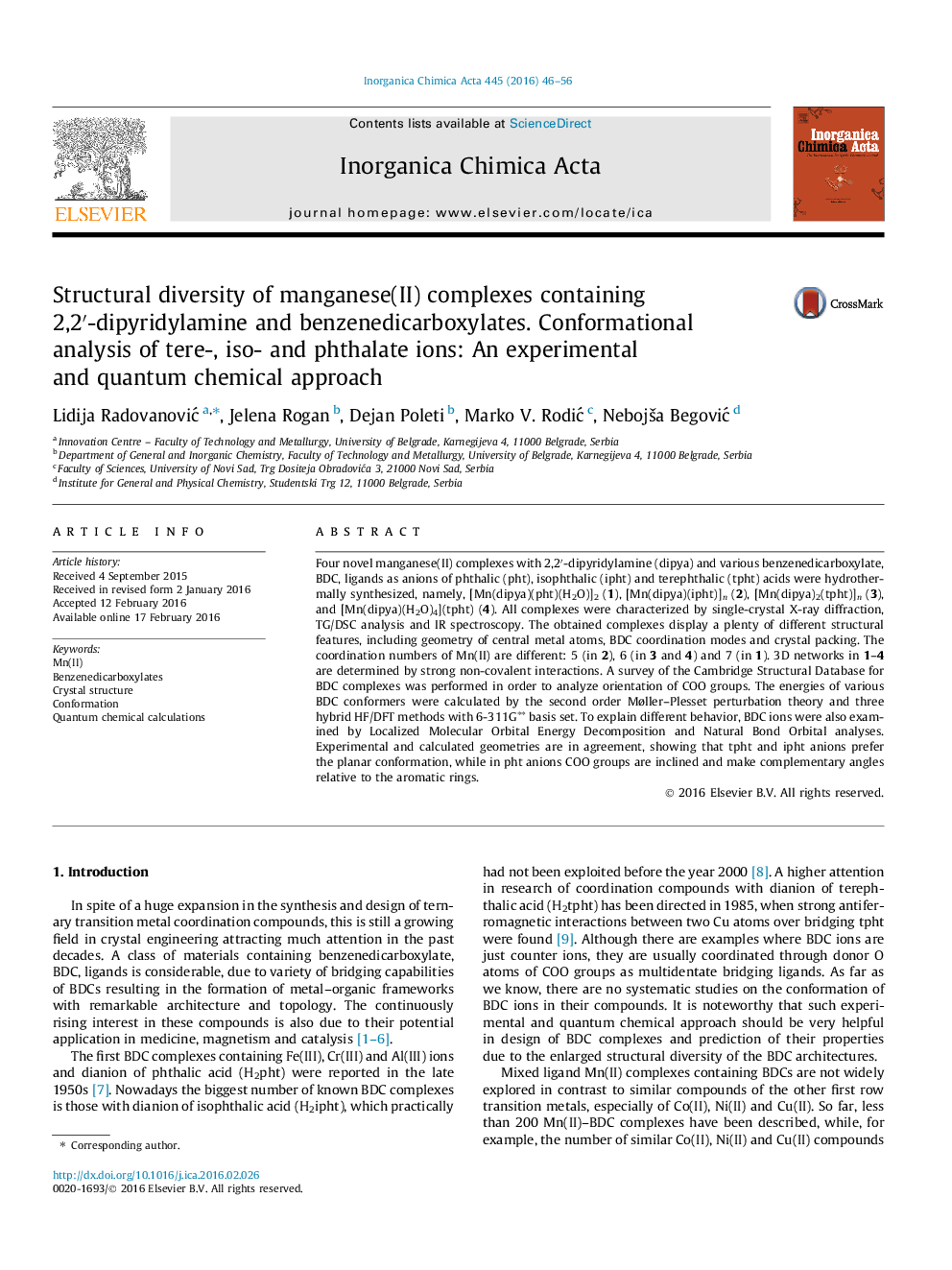| کد مقاله | کد نشریه | سال انتشار | مقاله انگلیسی | نسخه تمام متن |
|---|---|---|---|---|
| 1308213 | 1499144 | 2016 | 11 صفحه PDF | دانلود رایگان |

• Four Mn(II) complexes with 2,2′-dipyridylamine and various benzenedicarboxylate (BDC) ligands were synthesized and characterized.
• All compounds showed remarkable structural and compositional diversity because of the versatile coordination modes of BDCs.
• A survey of the Cambridge Structural Database for BDC complexes was performed to analyze orientation of COO groups.
• The energies and different behavior of various BDC conformers were examined by different quantum chemical methods.
• Calculated geometries of BDCs showed good agreement with the experimental values.
Four novel manganese(II) complexes with 2,2′-dipyridylamine (dipya) and various benzenedicarboxylate, BDC, ligands as anions of phthalic (pht), isophthalic (ipht) and terephthalic (tpht) acids were hydrothermally synthesized, namely, [Mn(dipya)(pht)(H2O)]2 (1), [Mn(dipya)(ipht)]n (2), [Mn(dipya)2(tpht)]n (3), and [Mn(dipya)(H2O)4](tpht) (4). All complexes were characterized by single-crystal X-ray diffraction, TG/DSC analysis and IR spectroscopy. The obtained complexes display a plenty of different structural features, including geometry of central metal atoms, BDC coordination modes and crystal packing. The coordination numbers of Mn(II) are different: 5 (in 2), 6 (in 3 and 4) and 7 (in 1). 3D networks in 1–4 are determined by strong non-covalent interactions. A survey of the Cambridge Structural Database for BDC complexes was performed in order to analyze orientation of COO groups. The energies of various BDC conformers were calculated by the second order Møller–Plesset perturbation theory and three hybrid HF/DFT methods with 6-311G∗∗ basis set. To explain different behavior, BDC ions were also examined by Localized Molecular Orbital Energy Decomposition and Natural Bond Orbital analyses. Experimental and calculated geometries are in agreement, showing that tpht and ipht anions prefer the planar conformation, while in pht anions COO groups are inclined and make complementary angles relative to the aromatic rings.
Four novel manganese(II) complexes with 2,2′-dipyridylamine (dipya) and various benzenedicarboxylate, BDC, ligands were hydrothermally synthesized and characterized by single-crystal X-ray diffraction, TG/DSC analysis and IR spectroscopy. A survey of the Cambridge Structural Database for BDC complexes was performed in order to analyze orientation of COO groups and the energies of various BDC conformers were calculated by different quantum chemical methods.Figure optionsDownload as PowerPoint slide
Journal: Inorganica Chimica Acta - Volume 445, 24 April 2016, Pages 46–56